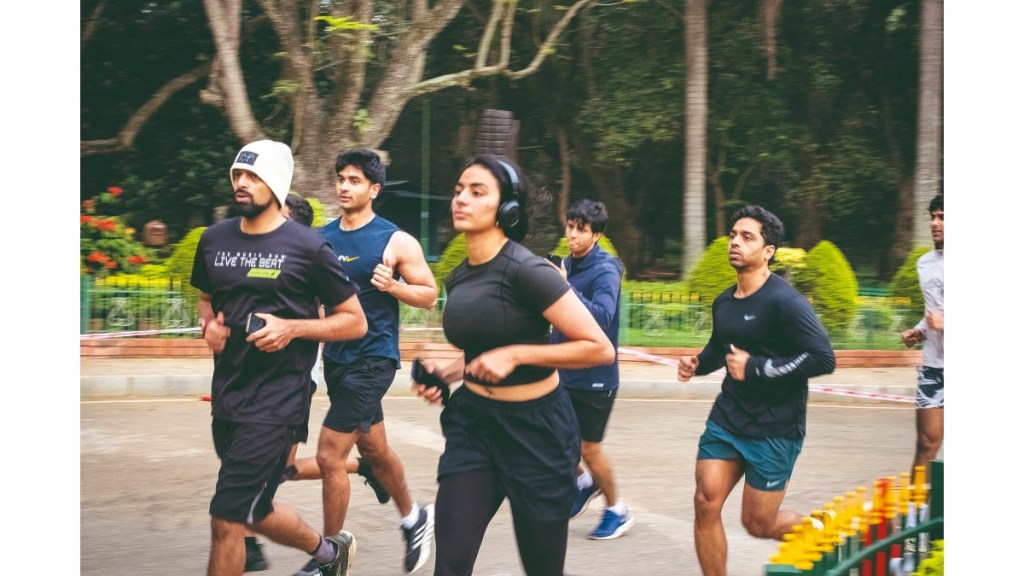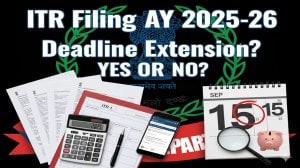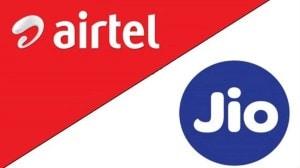Vishwajeet Kaushish, a 54-year-old former national athlete in rowing, had been a fitness enthusiast all his life. He would run in marathons, participate in sports events regularly, and be up-to-date about all happenings in the world of athletics.
On one of his marathon runs in Delhi around 2013-14, Kaushish started wondering why his hometown Chandigarh — which had many runners and a lot of cycle tracks alongside roads where people could run comfortably — did not have annual marathons.
And a realisation hit him. For there to be events like marathons, the city had to have a community that was passionate about the sport. In 2016, Kaushish took matters into his own hand and started a running club called Chandigarh Distance Runners (CDR). The club has since grown into a group of 150-200 active runners who meet four times a month and run a half marathon. Once every month, they also run a full marathon.
Running is one of India’s fastest growing sports. Over 1,500 running events are organised each year in the country, generating a revenue of nearly $450 million. There are also almost 2.5 million registered runners in the country.
While running is often considered a solitary activity, groups like CDR are trying to change that. In fact, in the past decade, a lot of citizen-helmed running clubs have emerged across the country, in tier-1 and tier-2 cities especially.
Take, for instance, the Delhi Runners Group (DRG) which was started in the summer of 2013 when a few recreational runners started running together from Nehru Park to India Gate in the national capital. What started as a hobby is today one of India’s largest running groups with over 11,000 members.
Alfredo Miranda and Rahul Verma, two of the seven admins/coaches of DRG, tell FE, “The group was founded with an aim to promote running, to share information on it, to run together at least once a week, and build a runner’s camaraderie.” Every July since 2015, DRG has been organising a half marathon, the last of which saw the participation of over 1,000 runners.
A little bit same and a little bit different is the story of Pankkaj Dhiman, the founder and head coach of New Delhi Road Runners, too. Dhiman used to be a bodybuilder before a shoulder injury prevented him from lifting weights anymore. That’s when running became his solace and he started this club in 2017.
Being a professional in the fitness space, Dhiman wanted a group that was technology and performance-driven, while also being accessible. Now, his group has people from all around the city — the youngest of the 30 members is a 7-year-old, while the oldest is 63. However, unlike the other clubs, the New Delhi Road Runners meet every single day and run on Amrita Shergil Marg at five in the morning.
These running clubs are now the legacy ones that have been around for a while and enjoy a certain gravity attached to their name.
Fitness and friendships
Now, a bunch of running clubs started by young people have joined the mainstream. What they do differently is combine their passion for fitness with the (much too annoying) urban loneliness, and voila! — You have the perfect merger of fitness and socialisation.
“I wanted some sort of an alternative through which people can meet strangers and make new friends other than going to a pub, an event, or a party. I wanted an avenue for networking and socialising, but centred around fitness,” Arvind Srikanth, one of the co-founders of the Bengaluru-based 56 Run Club, tells FE.
The club — which was started in October 2024 by Srikanth, and his friends (Arpit Natu, Smayana, Akash Srikanth, and Manav Subramanian) — was named after the Bengaluru pincode, 56. Says Srikanth, “We are an invite-only run club. Since we started, we’ve received over 3,000 registrations but our group size is about 300, and it’s a healthy mix of young people between the ages of 21-30.”
Joshua Fernandes, a 24-year-old entrepreneur and the founder of Goa-based The Social Sprint, nods in agreement. Fernandes also started the club in October last year and says, “Running alone is difficult, and can get really taxing if there’s no one to motivate you. So our goal is to bring together the ‘social’ and the ‘running’. We focus on socialising as much as we do on the fitness aspect of the club.” The group that started with some 20 people, now has over 200 members. They meet on two Sundays each month, early in the morning.
Bengaluru has another growing run club, which is already quite popular, the Namma Run Club. Started as a way to channel more energy into their passion for running, three working professionals — Debayan Mukherjee, Mohammed Zaid, and Rashika Ganeshan — got together in September 2024 to create this tight knit group of 250 members, who meet on weekends to run alongside each other.
Mukherjee, one of the co-founders, says, “Most of our friend circle is highly conscious of health and they all love to stay fit. With this club, our motive was to ‘get people moving’ in any form, agnostic of the speed and distance. It’s been a healing process for us.”
Even with different cities, different stories, and different motivations, there are two things that tie all these running clubs together — a love for the sport, and the fact that all of them are free-membership clubs.
Kaushish, in fact, tells FE, “We want to promote the spirit of running. Even if you’ve never run once in your life, you are welcome to join our club. We also have a tradition wherein whenever one of us runs their first full marathon, the group pools in money to pay the registration fee.”
In line with brands
But while these groups might be free, there’s a lot for many brands to gain here. Be it the big names like Tata, Apollo Tyres, or Vedanta that are the name partners for Tata Mumbai Marathon, Apollo Tyres New Delhi Marathon, and Vedanta Delhi Half Marathon, respectively; or the ones not related to running at all.
For instance, Fernandes of The Social Sprint tells FE, “Red Bull India has been supporting our events continuously by giving us their energy drink cans and showcasing our events on their social media handles.” The club even collaborated with actor Ranveer Singh’s protein brand SuperYou on one of their runs.
On the other hand, when the 56 Run Club hosted an event in January, which was essentially a ‘rave after a run’, they collaborated with JW Marriott for a breakfast and DJ party. Similarly, to emphasise the ‘social’ in their name, Fernandes’ club has been organising ‘after-run events’ in collaboration with local businesses like Fika Cafe, Ashwini Cafe, and Nanbai Cafe in Goa.
A lot of opportunities to attract younger crowds are also pouring in for brands since many Gen Z and millennial folks are using fitness communities to find friendship and love. And with an increasing interest in running, there’s also more people now buying sportswear, tailored-nutrition plans, insurance, and recovery-related products.
The big leagues have a lot to gain here too which would explain their considerable presence in the space too. Afterall, it was the sports management company, Procam International, that helmed the first Mumbai Marathon in 2004.
Like the citizen-run initiatives, a lot of sporting goods companies have their own clubs which have a free membership model too. Fitso, a fitness and wellness-oriented brand, has a Fitso Running Club. Adidas helms Adidas Runners, while Nike has a Nike Run Club.
Ayesha Billimoria, a coach with the adidas AR community in Mumbai, tells FE, “The adidas AR community was started with a simple yet powerful goal to bring together like-minded individuals in a safe, inclusive, and high-energy space. As coaches, we have always believed that running is for everyone, and it’s crucial to learn the right techniques to run injury-free. We make sure people leave each session having learned something new—whether it’s about form, recovery, or mindset.”
“From the adiClub point system that rewards consistency to peer motivation in group runs and challenges, we’re helping runners stay inspired and committed. But more than that, the AR community is a place for every pace, where people come to find their tribe,” says Vikas Srinivasan, captain at adidas’ AR community in Bengaluru.
Similarly, Reebok has the Reebok Running Squad. Randhir Kumar, product and design head, Reebok, tells FE, “The love for running has seen a massive increase lately. In the past 2-2.5 years, we’ve grown to a community of over 3,000 members and 18-20 coaches across 10 locations in 4 cities — Delhi, Mumbai, Kolkata, and Bengaluru. Our objective is to make India fitter.”
“We are a purpose-driven group. But we don’t focus on performance goals. Our coaches train the club members in strength training and exercise, increasing mileage, how to hydrate yourself while running, how to keep going, and how to avoid injury. So we also organise bootcamps, we sponsor marathon registrations for runners who might need the help, and offer different perks,” adds Kumar.
ASICS India also established the ASICS Running Club (ARC) in 2016. Saurabh Sharma, director of marketing, ASICS India, says that their group too provides training sessions under the supervision of professional runners.
All these clubs are open to people at different levels of their running journeys — beginners, intermediate, and advanced runners. Says Sharma, “ARC is active in nine cities across India: Delhi, Gurugram, Noida, Mumbai, Pune, Hyderabad, Chennai, Bengaluru, and Chandigarh. We host occasional community training runs, store events, and promotional runs for our members.”
Interestingly, these clubs have seen an increasing interest in people with each running season. Sharma from ASICS says, “The growing interest in running is one of the key reasons for ASICS to expand the presence of ARC not only in tier-1 but also in tier-2 cities, which largely reflects the expanding fitness culture across India.”
New Balance India also launched the New Balance Run Club (NBRC) this year. Radeshwer Davar, country manager for India at New Balance, tells FE, “NBRC is an open to all run club. We meet once a month with our community of runners, be it first timers or seasoned professionals, and our expert team of coaches help them to achieve their running goals.The club is currently active in Mumbai, Delhi, and Bengaluru. Going forward, we may look at rewarding our regulars.”
But what exactly does being in a running club feel like? Says Kumar of Reebok, “Running really is a team sport. You need support and patience to develop a certain level of endurance, and it’s always great to have someone empowering you while on the journey. Running isn’t just an avenue for physical and mental well being, but becomes a way of life for you.”
A bumpy ride
However, despite running being all the rage at the moment, not all is rosy. A lot of cities do not have designated cycling or walking tracks. Once Srikanth’s 56 Run Club was told by the Cubbon Park authorities in Bengaluru that they could not gather there. The issue got sorted later though.
Too often, the sidewalks are occupied by vendors, parked vehicles, or people. If you’re running on the road, you’re bound to meet traffic, stray animals, and vehicles. A report by the Ministry of Road Transport and Highways had in 2019 revealed that 1.15 lakh people died in about 4.5 lakh accidents that year. And when it comes to deaths in road accidents, media reports show that pedestrians account for 17% of all victims, while cyclists account for 3% victims — the numbers reiterating that Indian roads aren’t the safest of them all. In fact, just last year, an 18-year-old, who was out jogging in Mumbai, died after a car hit them.
If somehow you’re lucky to avoid all this, it’s almost impossible to step out and not run into dust-ridden roads or bridges under construction. And of course, who can miss the poor air quality, increasing pollution, and extreme weather events that are unfortunately becoming a normalised part of our lives?
Kaushish from the Chandigarh-based club also recognises that safety is a concern for women and gender minorities, especially if they are preparing for ultra marathons, which require them to start training at around 2-3 AM to beat the heat.
However, a welcome change is that now a lot of running clubs are promoting women’s participation. In fact, almost 25% of the Mumbai Marathon participants have been women for the past few years.
Interestingly, while running is also considered a low-cost sport, it’s far from true, especially if “it’s a way of life” for you as these communities and brands say. Proper running shoes, sports apparel, and an efficient health tech device to monitor your vitals can put a strain on your pocket. For regular runners, marathons are a big cost too. The registration cost for the Tata Mumbai Marathon — held on January 19, which saw the participation of over 65,000 people — was about Rs 3,000. At the 10th edition of the Apollo Tyres New Delhi Marathon on February 23, which had over 20,000 participants, the registration fee ranged from Rs 944-Rs 4,245.
Sprinting forward
But there’s hope, because like the famous adage goes — it’s a marathon, not a sprint.
All these clubs have big plans on how to expand and become more inclusive. For instance, Fernandes mentions that right now his club’s demographic consists of a lot of young people, especially college students. Says he, “I’m thinking of starting a new segment called ‘The Social Walk’ to help people ease into fitness. This would be a great way to bring in elderly people and those with comorbidities who can’t exactly run for long periods.”
With the right coaching and physio guidance, many runners from these clubs have gone on to run full, half, and even ultra marathons. Miranda tells FE, “Some of our members have even aced the coveted Ironman Triathlons around the world.”
Rakesh Kashyap, a member of CDR, too has run multiple ultra marathons now, even though when he first joined the group, he could barely run 1-2 km. CDR now organises two annual running events — a little champs and moms run, and a hill half marathon — to encourage people to run.
Dhiman also proudly claims that from October onwards, when the marathon season begins, the New Delhi Road Runners can be seen in multiple races from Ladakh, to Mumbai, to Rishikesh, to Bengaluru.
Interestingly, a lot of national athletes preparing for competitions like the Olympics also participate in these marathons. Three athletes who went on to compete at the 2016 Rio de Janeiro Olympics — Nitendra Singh Rawat, Gopi Thonakal, and Sudha Singh — raced in the Mumbai marathon too prior to the global sports event.
What a lot of these groups emphasise is that to start, you only need a little push that fortunately being in a community provides in abundance, and after that, running itself engulfs you, becoming a “way of life.” All it really takes then is… Ready, Set, Go!
On the move
- 1,500: No. of running events organised each year in the country
- $450 mn: Revenue generated by running events in India
- 2.5 mn: No. of registered runners in the country
Know your marathon
- Full marathon: 42.195 km
- Half marathon: 21.095 km
- Ultra marathon: Any distance greater than a full marathon
- 10k: 10 km
- 5k: 5 km
Popular races
- Mumbai marathon: Third Sunday of January
- Delhi half marathon: October or November
- World 10k Bengaluru: May
- Kolkata 25k: December
- Ladakh marathon: September








